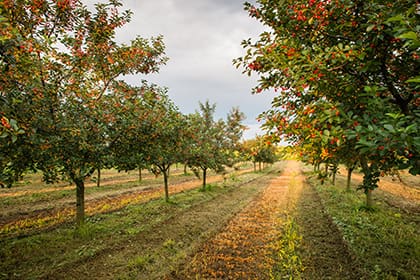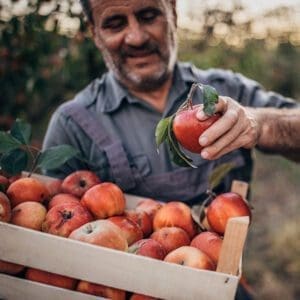
How to collect and use data to improve orchard sustainability
Not everyone in agriculture shares the same definition of sustainability. But most will agree sustainability includes environmental, economic and social elements that can increasingly be quantified by data and used by growers and their agronomic support teams to make informed decisions.

“Sustainability is really a whole system, holistic approach to production that promotes natural resource conservation through building soil health, increasing biodiversity, practicing integrated pest management (IPM) and precision management of water and nutrients, as well as promoting human resource equity and quality of life while being economically sustainable for growers,” said Byron Phillips, Wilbur-Ellis Agribusiness Pacific Northwest senior horticulturist.
Phillips applies a cross-disciplinary approach to research for cherry, apple and pear orchards, sharing outcomes with Wilbur-Ellis field consultants who then work with growers to solve tree development, disease and insect challenges and other production concerns to better enhance profitability.
“With so many data offerings becoming available, growers can easily become overwhelmed when trying to understand how to collect and use that data to improve sustainability of their orchards,” he said.
Wilbur-Ellis’ integrated teams of scouts, consultants and agronomy and water management experts help guide decision-making. For example, IPM is a strong component of sustainability that relies heavily on Wilbur-Ellis’ professional field scouting to make pest management recommendations.
“We also focus on soil moisture and nutrient sampling to develop precision nutrient strategies and to prevent groundwater contamination. We use onsite weather data to set schedules for field labor in adverse weather situations and protect crops from freeze damage, heat injury and sunburn. We can also use data to determine which cover crop to use for beneficial insect habitats, fix nitrogen for trees and break up hard pan soils,” Phillips added.

Technologies like Probe Schedule, which was acquired by Wilbur-Ellis, monitor soils every day for moisture and temperature to manage irrigation water and to help maximize nutrient use efficiency. Taking such action can help Honeycrisp apple growers increase the amount of product they bring to market by reducing bitter pit.
Onsite weather monitoring is executed by ATMOS weather stations and accessed through the Probe Schedule Platform, which allows Wilbur-Ellis experts to model for disease risk and insect pest biology and behavior.
SoilOptix performs soil scanning and analysis to generate data for nutrient applications and can be combined with aerial scans from drones and planes to map fields for variable rate applications.
“We are just starting to work with crop load scanning, too, which uses cameras to better generate fruit count and fruit size data.”
Phillips believes the future looks bright for orchards to increase data use and layer various data to refine sound, sustainable production decisions.
“Looking ahead, we hope to have access to a fully integrated digital platform that is intuitive, fast, comprehensive and easy to understand—and can be accessed frequently by growers and their field consultants,” he said.
“The platform should include worker and food safety compliance and be able to track the progress of all activities that enrich sustainability and ultimately show growers their return on investment for all practices,” concluded Phillips.

